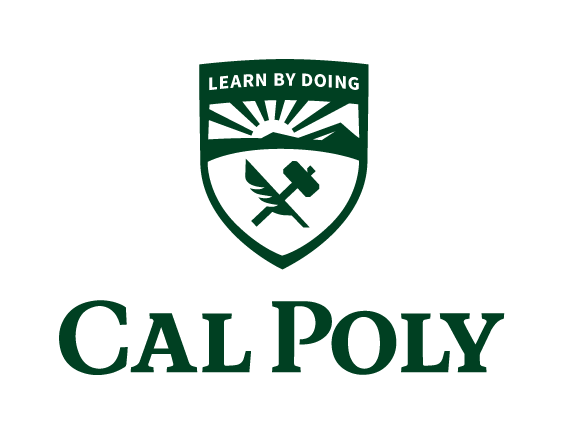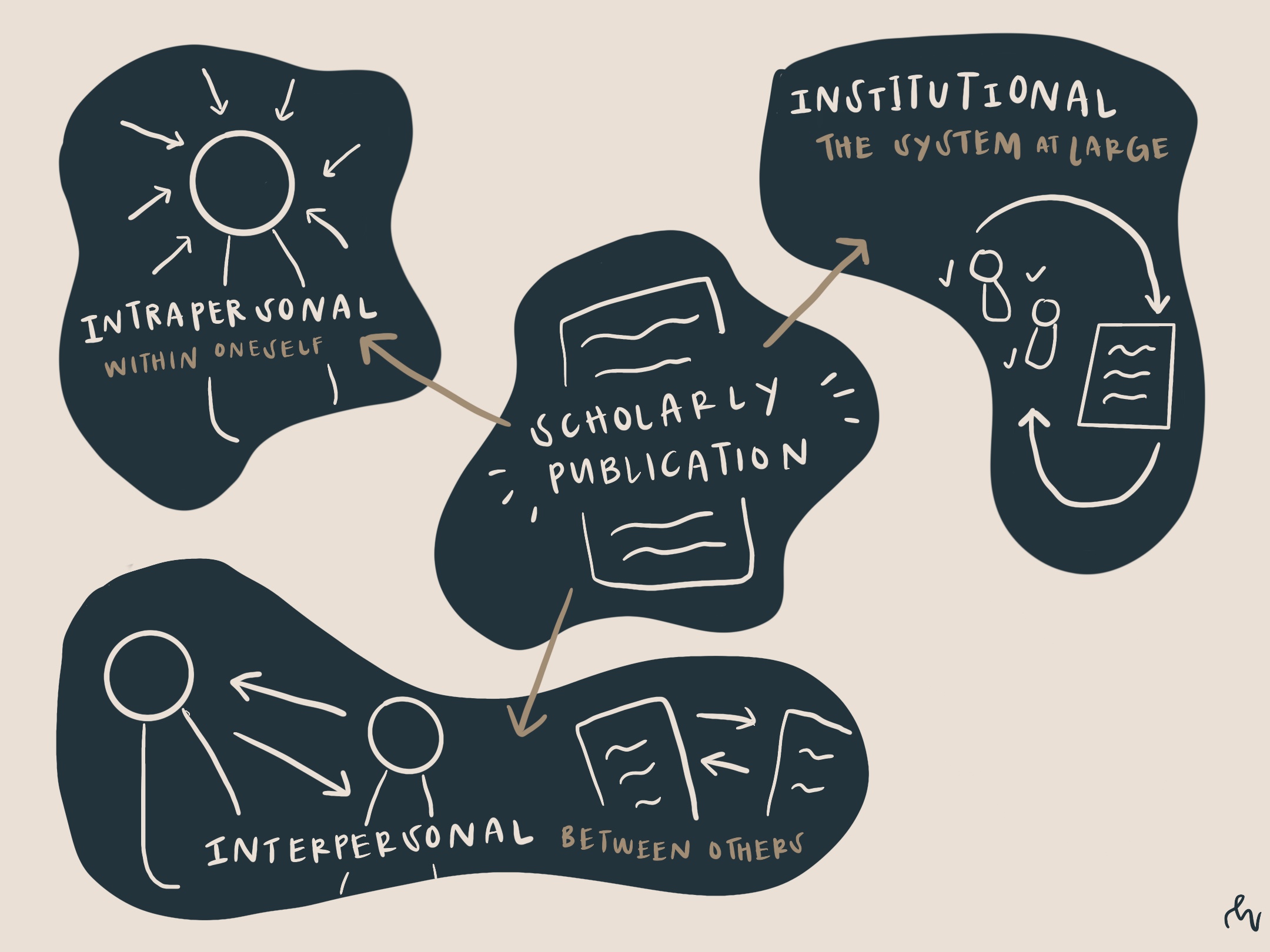
The need to be validated by others. The need for validation within oneself. Our research in “Please Validate Me: A History Project” explores the ambiguous idea of “external validation” and how it affects people in the realm of scholarly publishing. The title “Please Validate Me” highlights the desire and desperation to be accepted, to be validated. The goal of the project is to unpack the qualities of “worthy” scholarship and the histories behind them. This project aims to open the conversation and question the existing standards of what is valid.



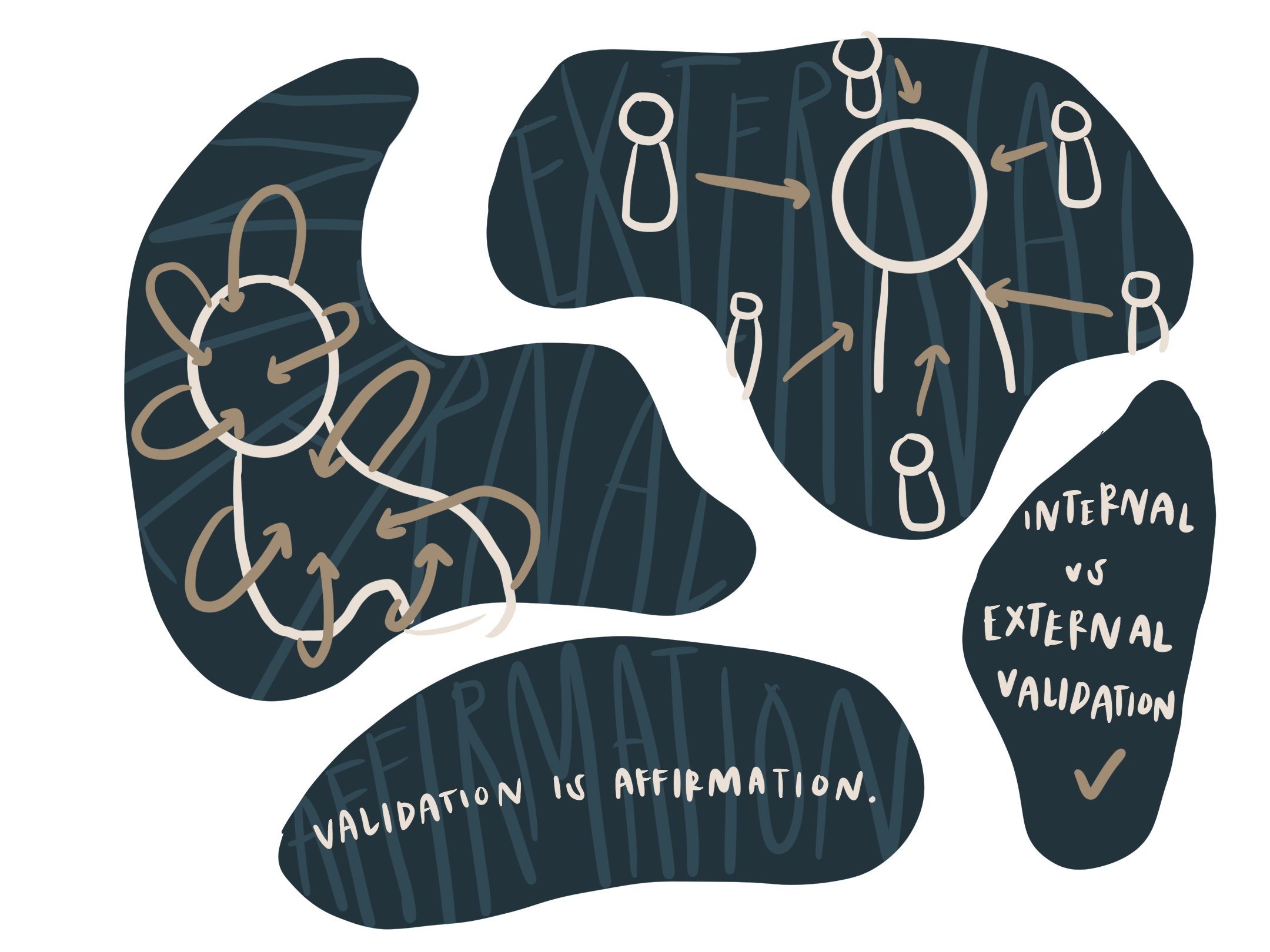
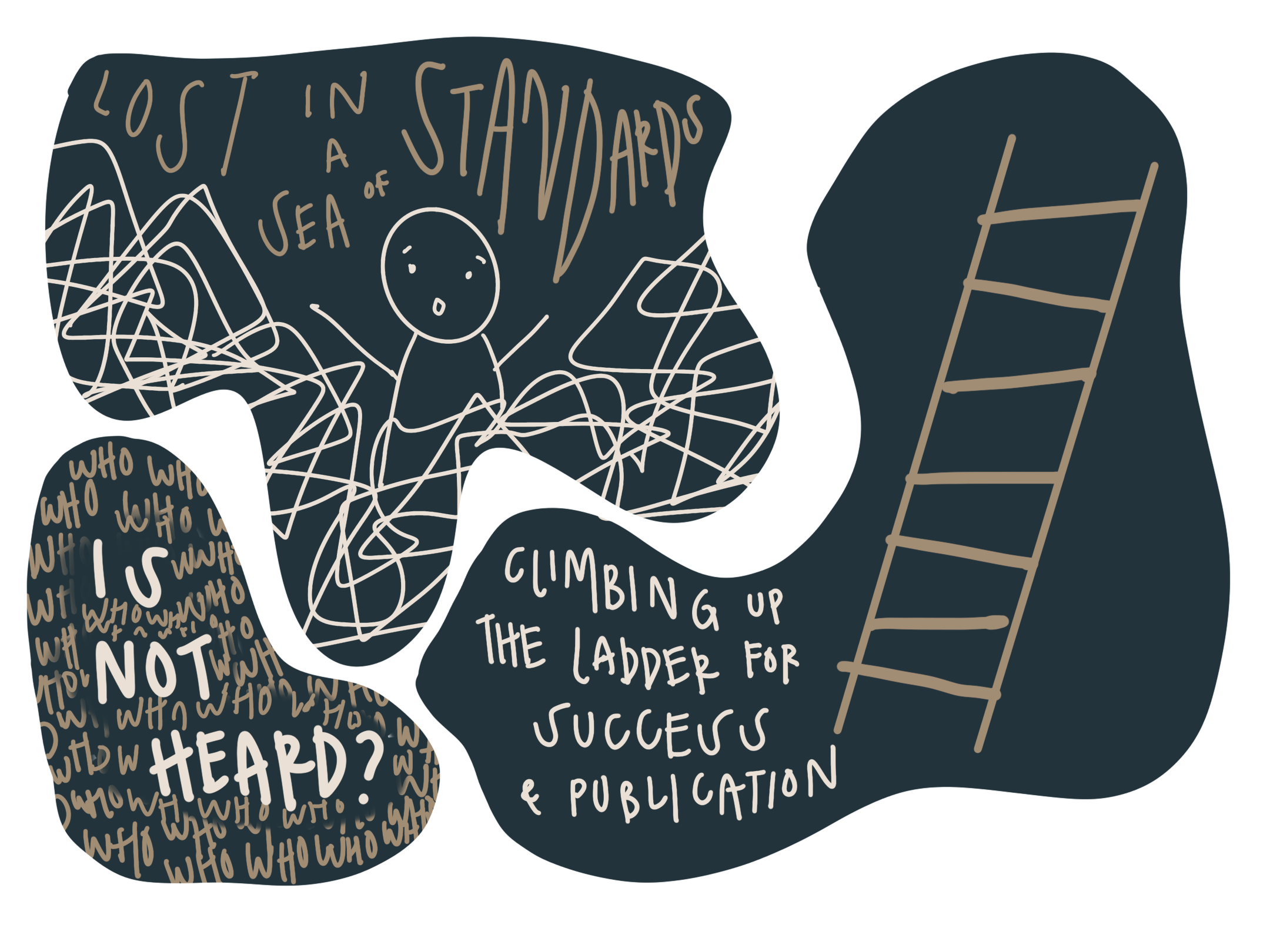

The need to be accepted. External validation is the “affirmation from a source outside of yourself,” (Saline). These outside sources include the relationships between one another such as family and friends. Institutional structures, like universities and media, are examples as well.
Through multiple channels of receiving validation, they all collectively work to construct feelings of reassurance to an individual. It positively reinforces our actions, as we are rewarded with feedback from others. This may also encourage others to continue or modify their behavior to receive this reinforcement once more. While this project primarily focuses on external validation in relation to academia, it is imperative to recognize the broad idea of external validation.
As others play a part in validating an individual’s thoughts, opinions, and emotions, it is important to also recognize that we contribute to how valid others are as well as how valid we are to ourselves. Our identities, experiences, and positionality influence our judgment and formation of values. These values in turn serve as our standards to weigh the validity of a work.
Furthermore, the personal values we hold as well as the values of those held by those around us play a part in establishing societal norms regarding what is acceptable and what is not. For example, the value of higher education was not established by a single individual but rather by a group of people over a long period of time.
Unlike external validation, internal validation is the validation of oneself. Reflect on your own biases. From the media you consume to the people you put yourself around, such factors play a role in our judgment and beliefs.
While it is not inherently bad to acknowledge external validation, a state of complete reliance can lead to obsessive monitoring, overthinking, and critiquing of oneself. With the need to be accepted, an individual may compromise their beliefs or abandon parts of their identity to fit the mold.
Furthermore, external validation raises the question of “Who is valid?” In conjunction with social norms, external validation is selective in who is accepted and who is excluded. Through an exploration of the relationship between identity and the publication of scholarship, the negative effects of external validation are apparent.

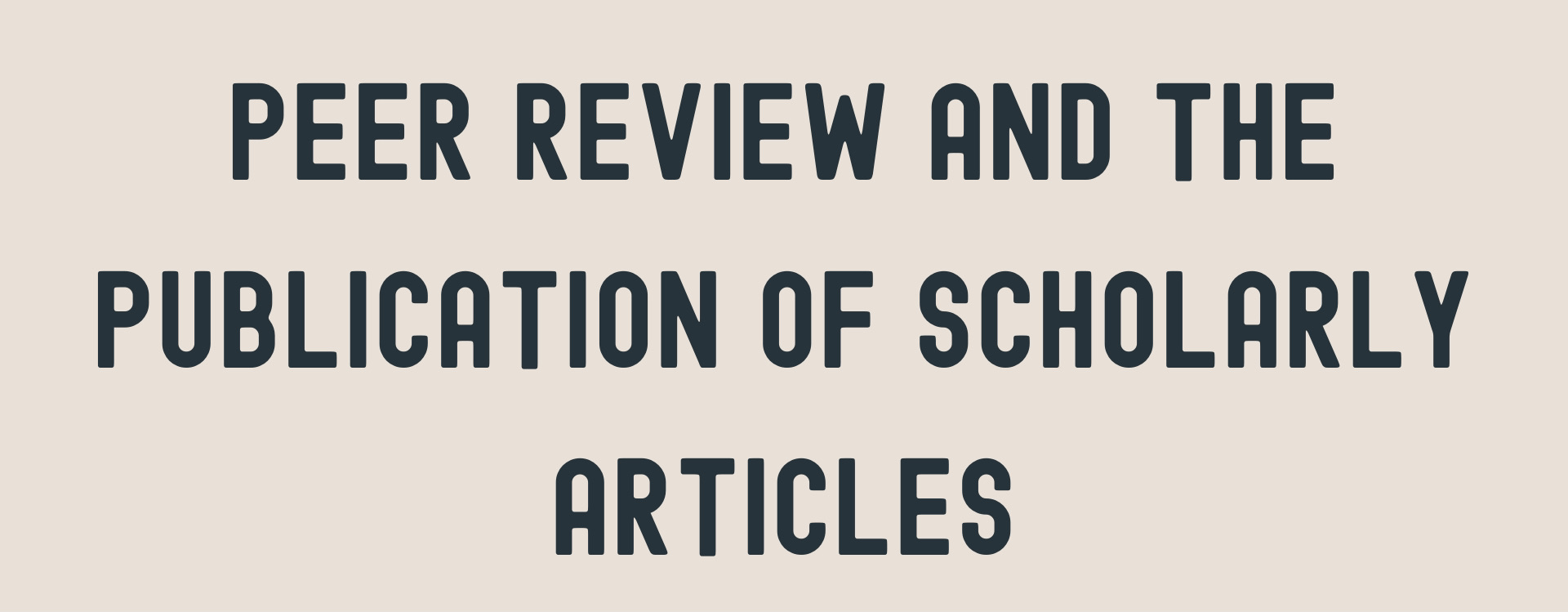
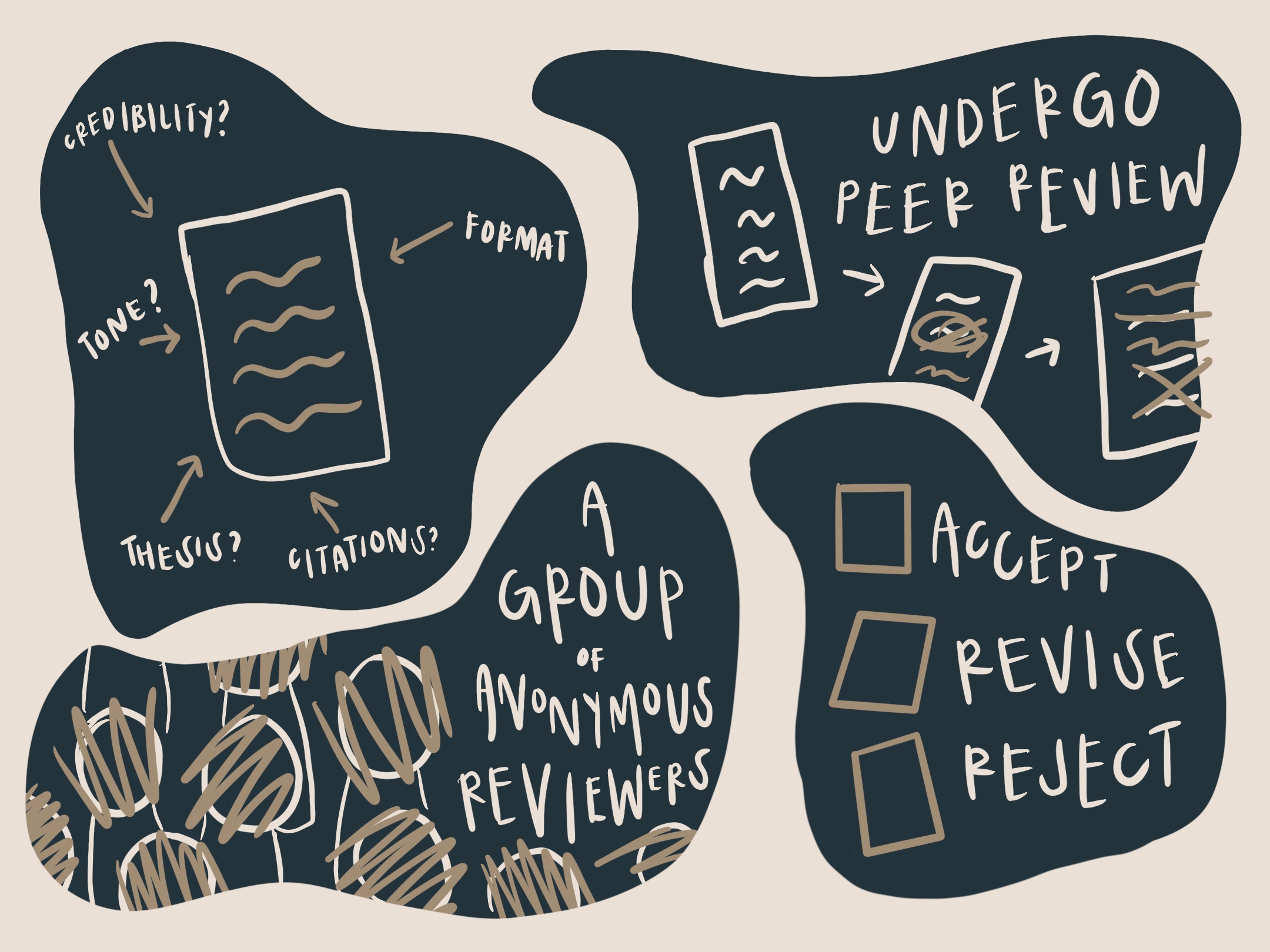
WHAT IS A SCHOLARLY WORK?
A work is considered scholarly if it is a contribution “to the general body of knowledge in an academic discipline” or to teaching and professional development (Cal Poly CLA). This can traditionally take the form of books and journal articles but has since expanded to other unorthodox forms of media such as websites and videography.
Scholarly works aim to innovate, challenge, or add to an area of knowledge in a given field. Overall, the purpose of scholarly works is to contribute to “the generation of knowledge concerning the discipline or the teaching of it” (Cal Poly CLA). Scholarly works are not limited to simply writing the work but also the publication and dissemination of knowledge.

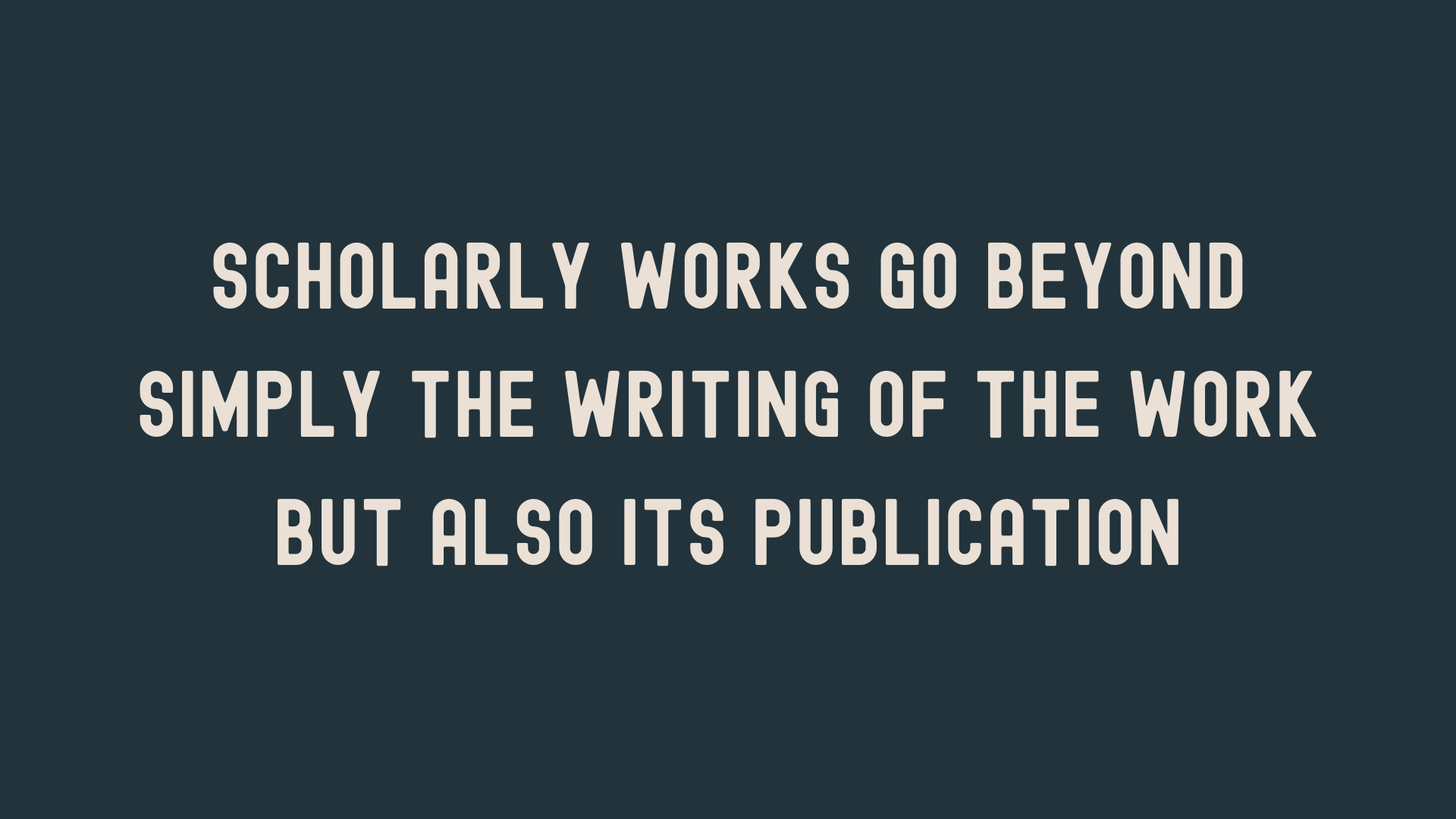

Where the work is published is plays a significant role in the validity of the work as a whole. Professional journals and esteemed conferences are key in disseminating information to a receptive audience and carrying the credibility necessary for the scholarship.
HOW IS RESEARCH IS PUBLISHED?
According to Elsevier, a scientific and medical publishing company, several steps are required in order to publish a piece of scholarly work in a journal. On their website, Elsevier provides an “easy” step-by-step guide on the publication process (“How to get”).
After writing a stellar piece of scholarship, Elsevier encourages scholars to publish their work. The publishing company explains the first step toward publication is to get noticed by others. They encourage aspiring scholars to share their articles with others and use social media platforms to increase the work’s visibility. While this step may seem as simple as sending it to others, one encounters a roadblock as they must be validated by those they share their content with.
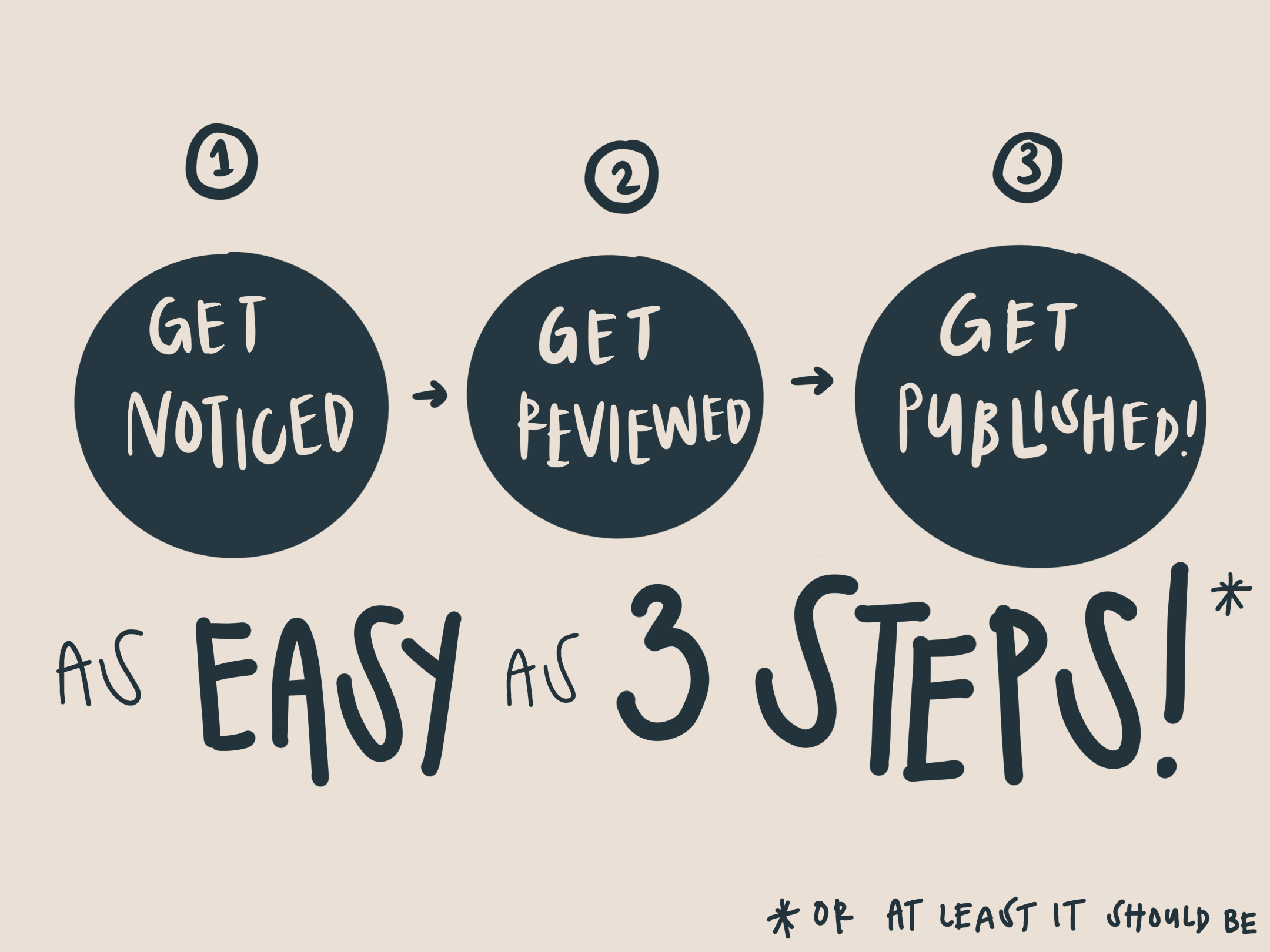
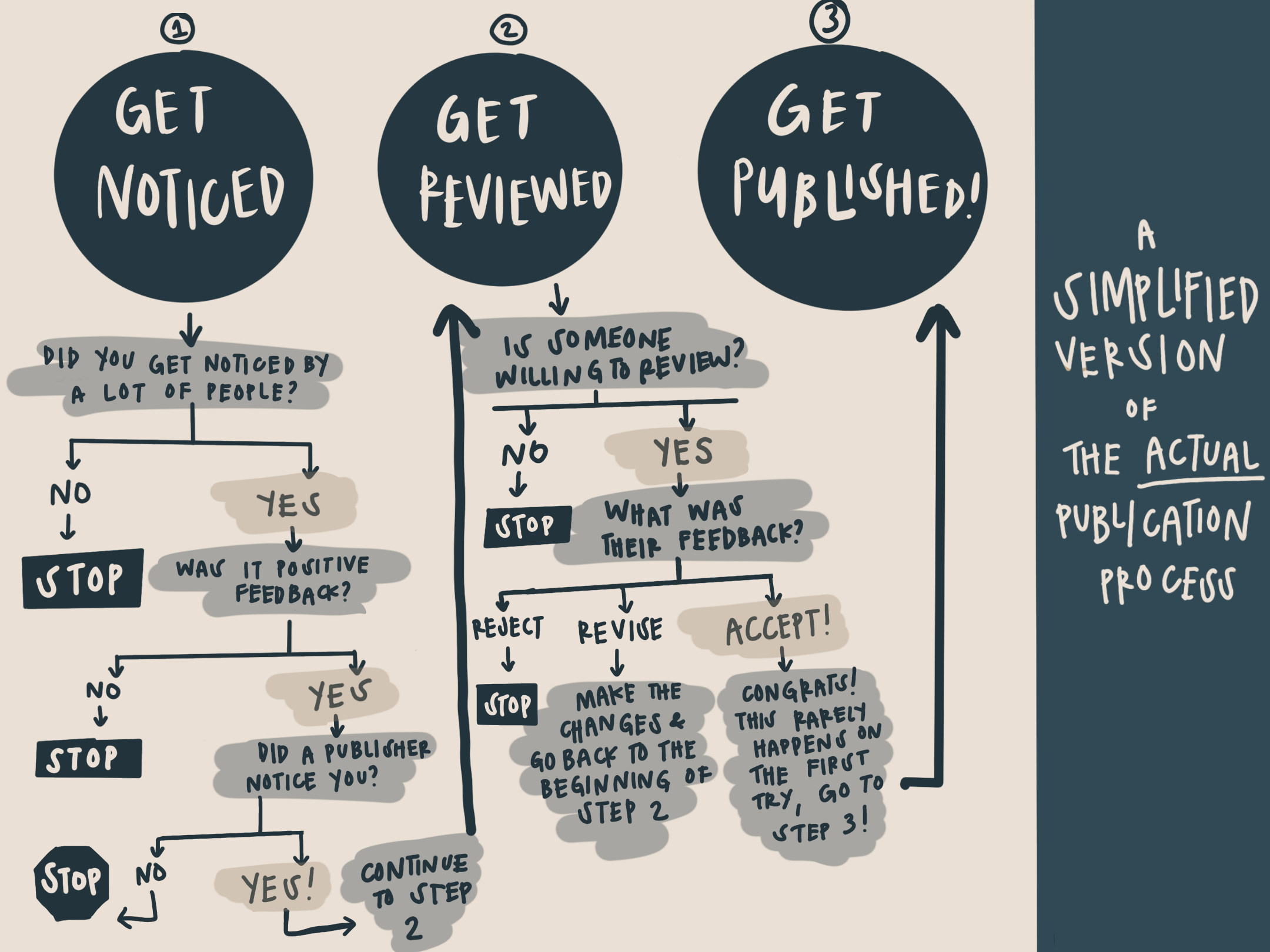

Although one can share their work with others, it is in the power of those the individual shares it with to accept the work and actually read it. Despite the fact that visibility is important, positive feedback from sharing it with others is just as important when trying to get a work published.
This article by Elsevier does not take into account identity and how that relates to the publication process. While it may be easy to email others and post on social media, the amount of networking an individual has as well as their reputation play a role in the success of getting noticed.
Due to variations in circumstances, qualifications, and qualities, the turnaround rate for successful marketing of a work is different for everyone. If an individual or group of scholars do successfully achieve getting noticed, they must then go through another round of validation as their work is forwarded to peer reviewers.
According to the Digital Publishing Project at Kennedy Library, “Peer review is a system to evaluate scholarship and its credibility for publication: a group of peers review the quality and nature of the work by not just the thesis, but also the voice, tone, format, and citations. This method of assessing scholarship is inherently biased because of the systems that scholars work in,” (Ding).
Through peer review, it is in the power of the reviewers to judge if a piece of scholarship is worth publishing and sharing with others.
After the initial peer review process if a work is approved, feedback is given to author that requires these changes must be made in order to continue with the publication. This process of peer review and revision then repeats until those in the position of power, the reviewers, determine that the work is up to their standards. Those setting the standards and producing the work, the publishers have the authority and ability to shape the
What may have appeared as a simple three step process, in reality is a journey of twists and turns that do not guarantee successful publication.



WHAT ARE THE EFFECTS OF THIS SYSTEM?
Kathleen Fitzpatrick, an English professor at Michigan State University states, “For objective judgment to be judged, it must have as its basis subjective, interested, informed expert opinion” (Fitzpatrick 198). Fitzpatrick points out that through creating and establishing standards, they are subjectively created by others. It is in the power of the those who create the standards which in turn creates disparities among different groups. As the possess of scholarly publication and for peer review have been examined, it is imperative to recognize the effects of it as well.
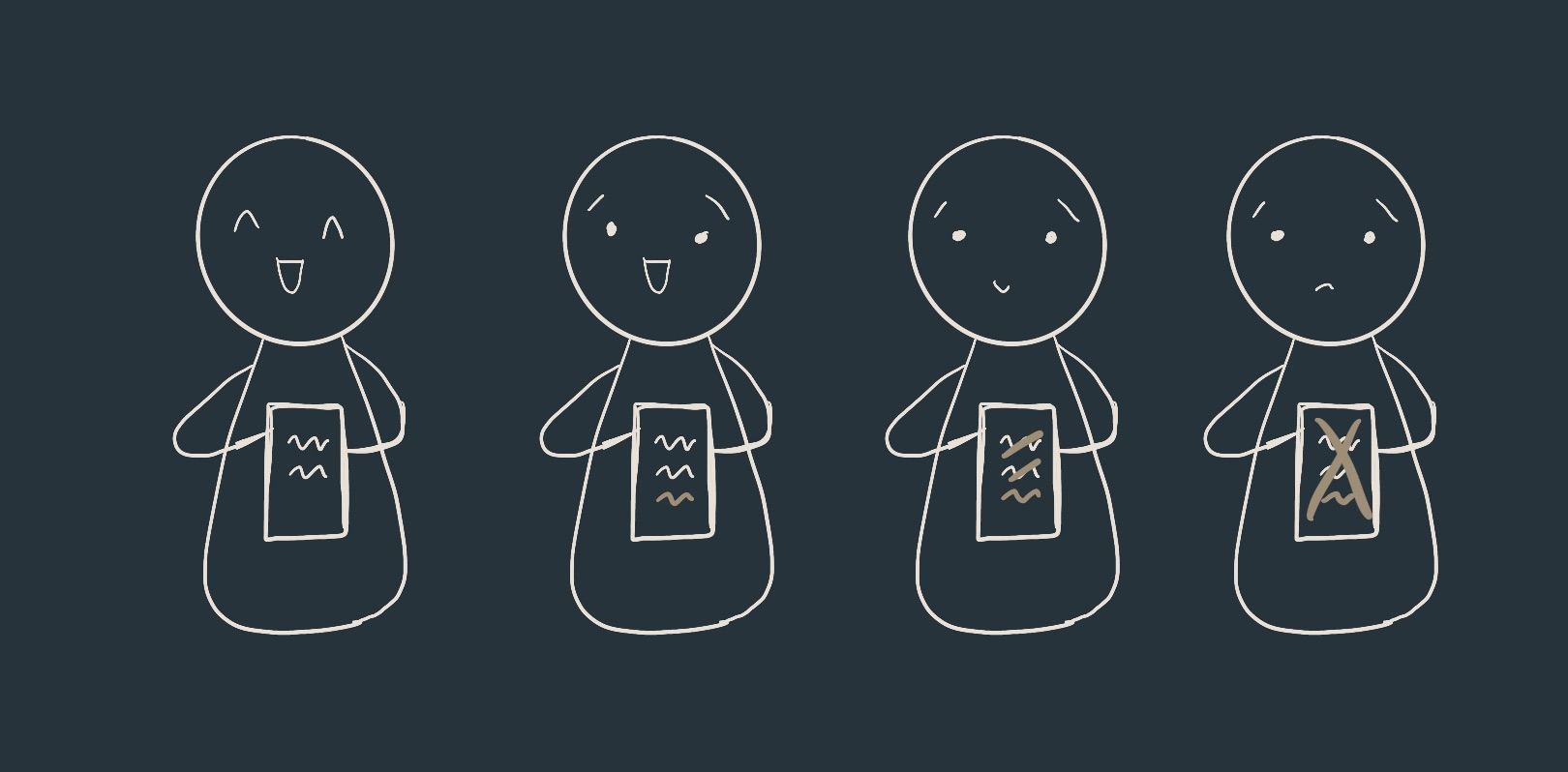
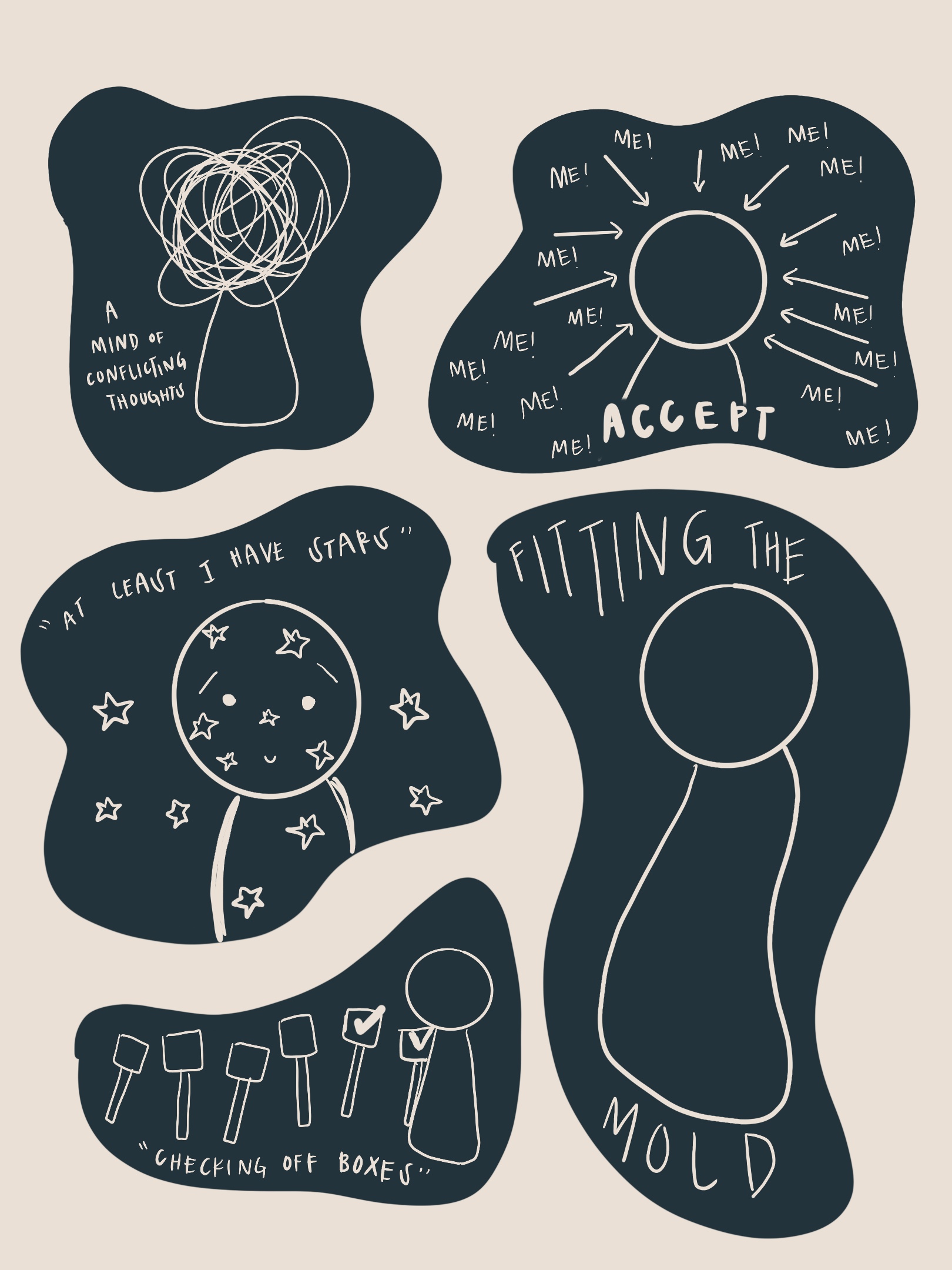
Fitzpatrick goes on to state, “The problems with our reliance on such objective measures become clearly visible at the highest reaches of the review process when metrics at least arguably appropriate to one discipline,” (Fitzpatrick 198). This institutional system of publication affects individuals on the intrapersonally (within oneself) and interpersonally (among others). It is important to recognize intersectionality. Originally coined by Kimberlé Crenshaw, intersectionality highlighted how various aspects of one’s identity are interconnected with one another to shape the experience of an individual (Oxford Dictionary). With the process of publication in coupled with the need for validation, an individual may use the standards used to judge their own self-worth as well as the worth of others. As identities work to shape the experiences of an individual,
It is also important out point out that scholarly publication is used as a standard for faculty tenure at institutions and universities. Patricia A. Matthew’s Written/Unwritten Diversity and the Hidden Truths of Tenure, writes that these “unwritten set of rules that disproportionally affects faculty who are hired to “diversify” academic departments and then expected to meet ever-shifting requirements set by tenured colleagues and administrators,” (Matthew). She adds, “Lack of representation amongst any BIPOC, womxn, and the LGBTQ+ community contributes to a system designed for self-doubt,” (Zenerations). Beyond the actual publication process and series of obstacles a scholar must undergo, the need for scholarly validation continues. These metrics are further used outside of the realm of publication and affect how an individual is viewed and how accomplished they are. With an objective set of standards that have been subjectively constructed by others, those who accept these standards unconsciously use them to make judgements of themselves and others.


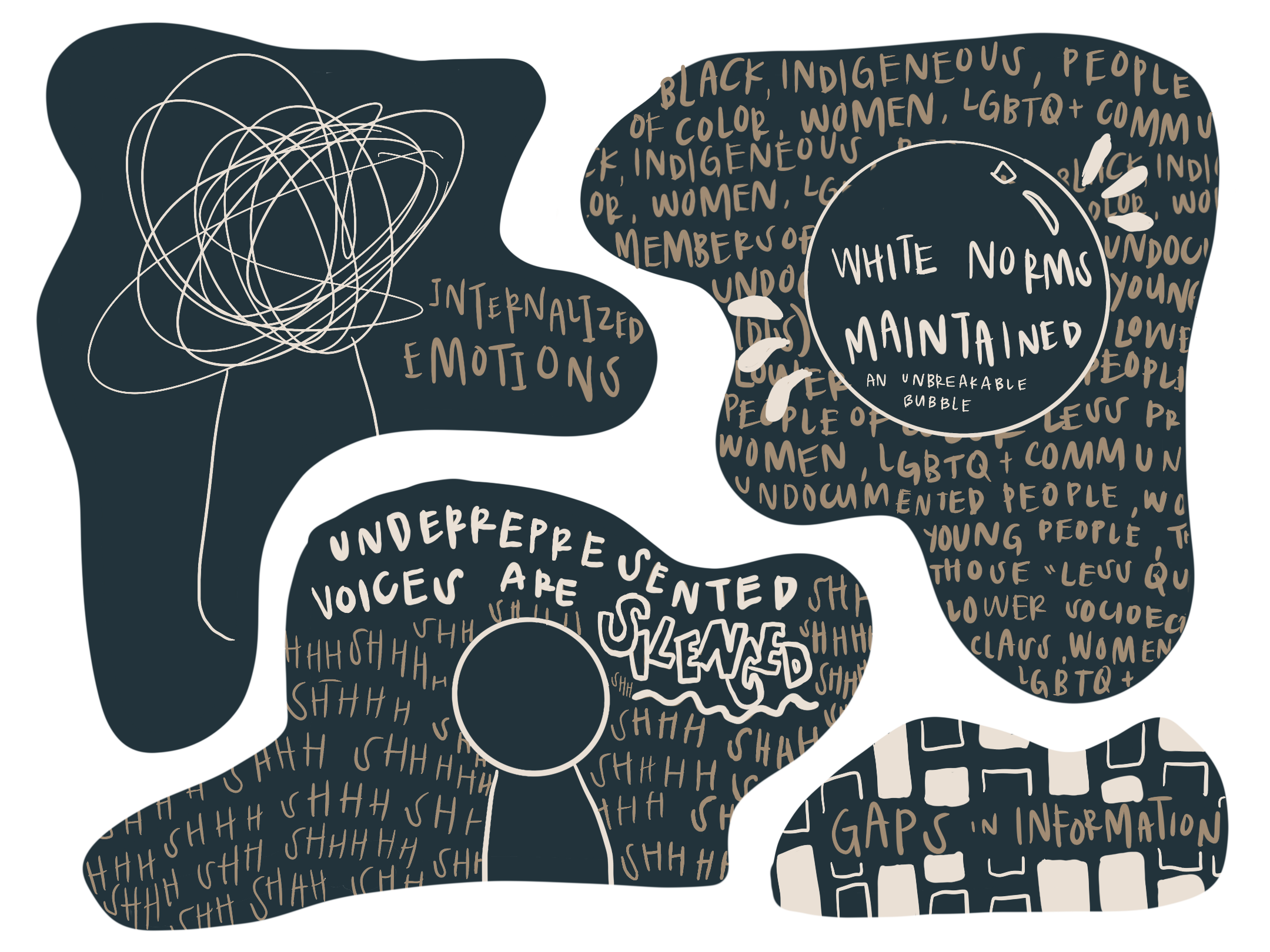
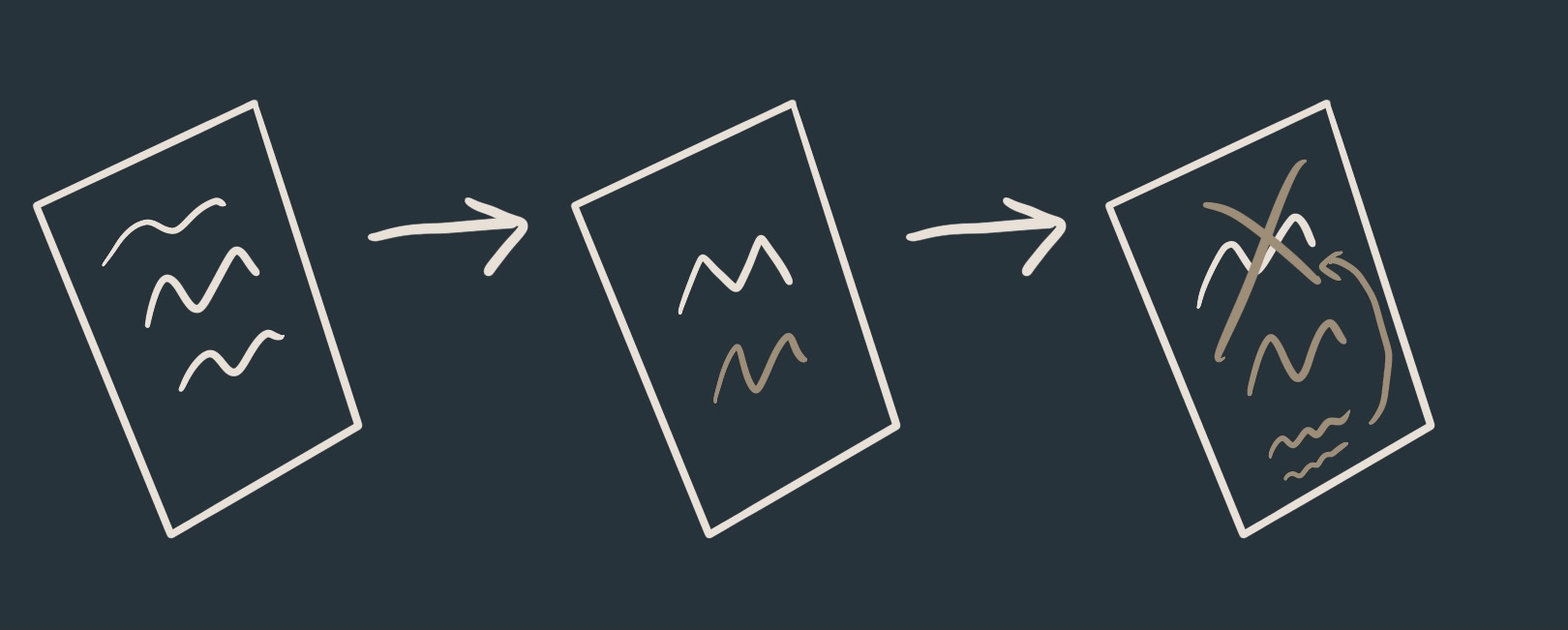
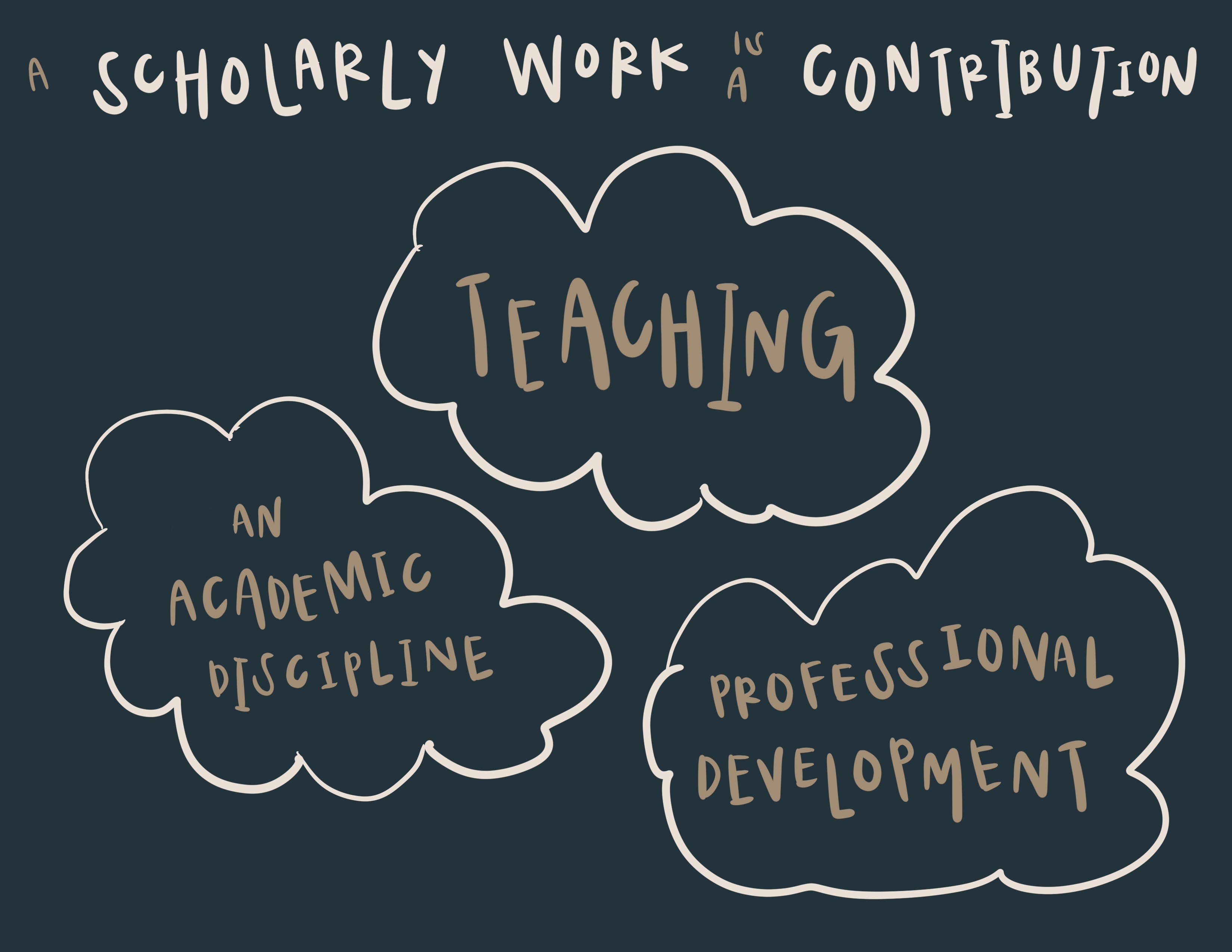
Bias in academia is not a recent development, but instead a pattern established over time, yet in recent decades the inequalities in scholarship have become apparent. In the 1970s through 1980s, the evaluation of teaching utilized peer review by allowing students and faculty to rate the effectiveness of a teacher (Hutchings). Additionally in the 1990s, there was a shift as the value of peer review became more important as faculty encouraged an increase in its usage. The involvement in peer review during university staff and those in higher education believed it would create more professionalism and seriousness (Hutchings).
Through utilizing peer review it serves as a standardized process of verifying the authenticity and credibility of an individual and their work. Furthermore, peer review helps in highlighting the value of scholarship as it encourages the participation of others.
Current historiography around this subject also touches on the imbalance of men being published than women in publication. “Commentary: Peer Review is Alive and Well in the United States,” Arie Rip sheds light on the underrepresentation of women in scientific publications. Through an analysis of over 40 years of data on peer-reviewed and non-peer-reviewed scholarship in California archaeology, Rip argues, “that this ‘peer review gap’ is influenced by variation in the costs (largely time investment) and benefits of publication for people working in different professional roles,” (Rip).
Through an analysis of over 40 years of data on peer-reviewed and non-peer-reviewed scholarship in California archaeology, Rip argues, “that this ‘peer review gap’ is influenced by variation in the costs (largely time investment) and benefits of publication for people working in different professional roles,” (Rip). Rip’s findings emphasize that while the disparities in scholarly publication are not solely responsible to the peer review system, but also those who choose to participate in it.


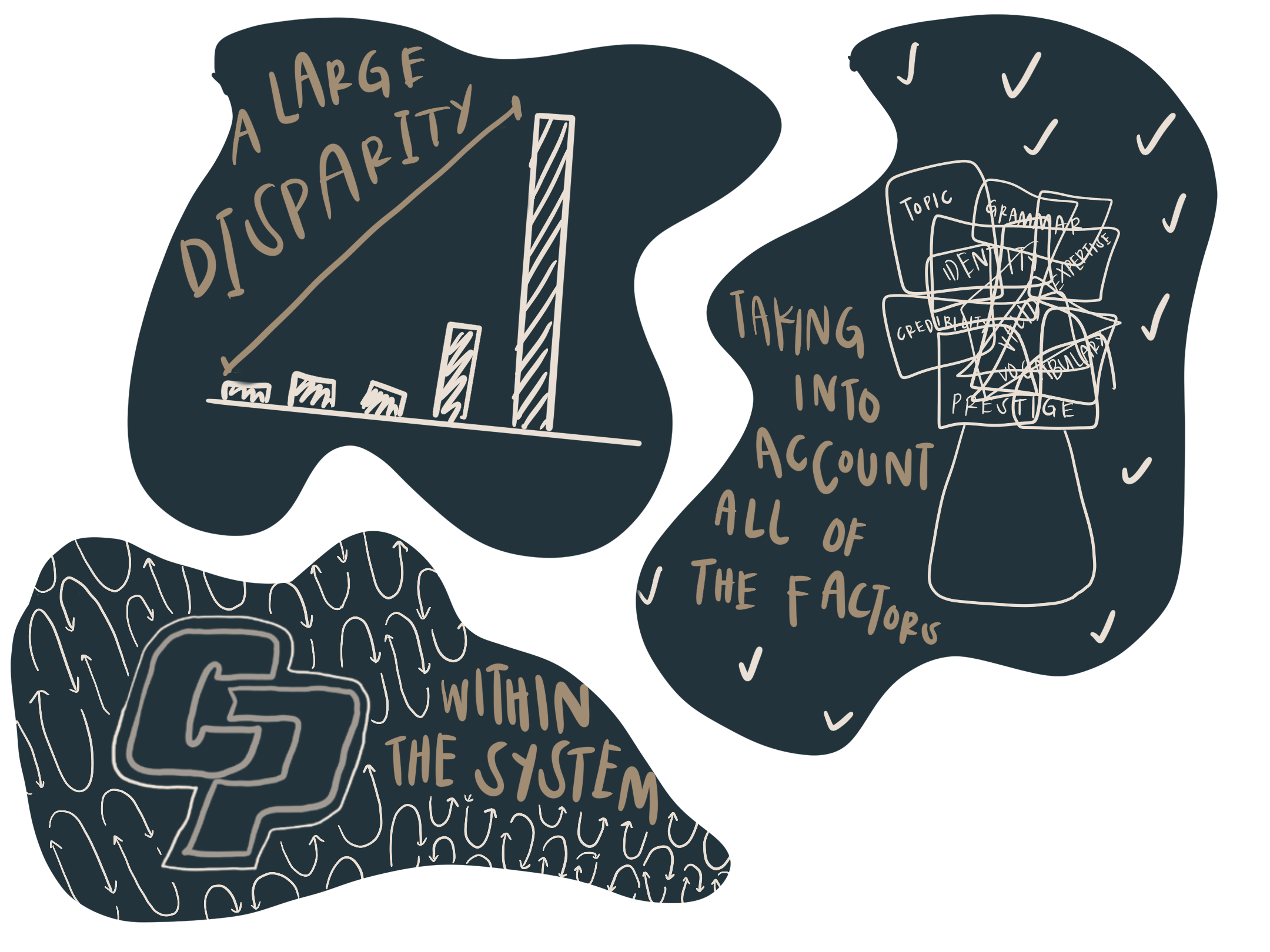
CAL POLY PEER REVIEW
Cal Poly is no exception to this issue. The peer-review system and publication can be found on Cal Poly’s campus. Cal Poly’s College of Liberal Arts’s “Best Practices for Constructing and Maintaining a High-Quality Working Personnel Action File, provides a list of acceptable scholarship to apply for tenure.
CLA states, “For traditional publications, this means that they appear in well-respected, rigorously peer-reviewed journals, per the college document. For books and book chapters, a comparable level of peer review is expected, and the book should be distributed by a reputable publisher. For exhibitions or performances, this generally means that they are beyond the local and at least occur in regional settings that are clearly juried. Alternatively, in the case of performances, if they are local, then there should be a documented vetting process that leads to a reputable award of at least regional stature,” (“Best Practices”).
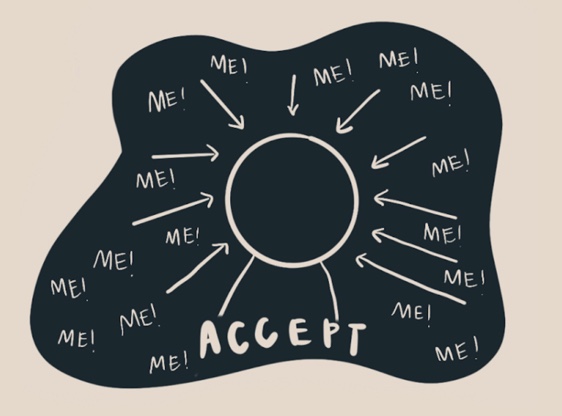
The use of the words, “well-respected,” “reputable,” and “comparable,” refer to the standards set by white male norms as they dominate the various fields of scholarship. These words provide room to consider what is valid versus what is invalid. What makes something well-respected? Rigorous? Reputable? This vague language implies certain standards must be upheld and further places power in the hands of those who strive for these standards. The fact that a tenure candidate must provide evidence to show their achievements and prove themselves through the publication process further sheds light on the need to be validated.
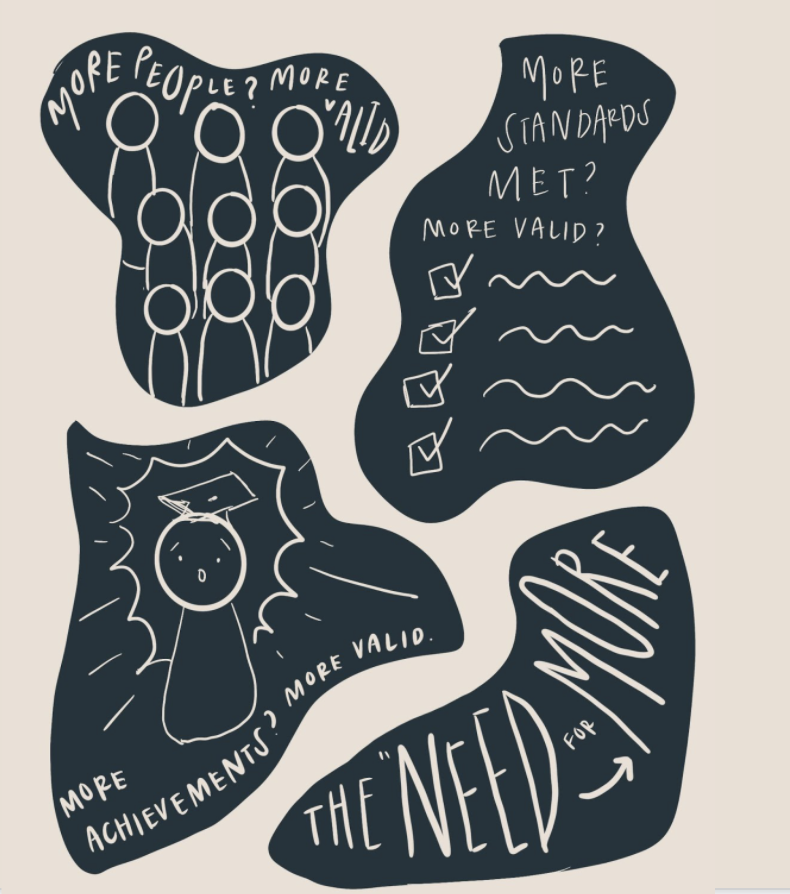
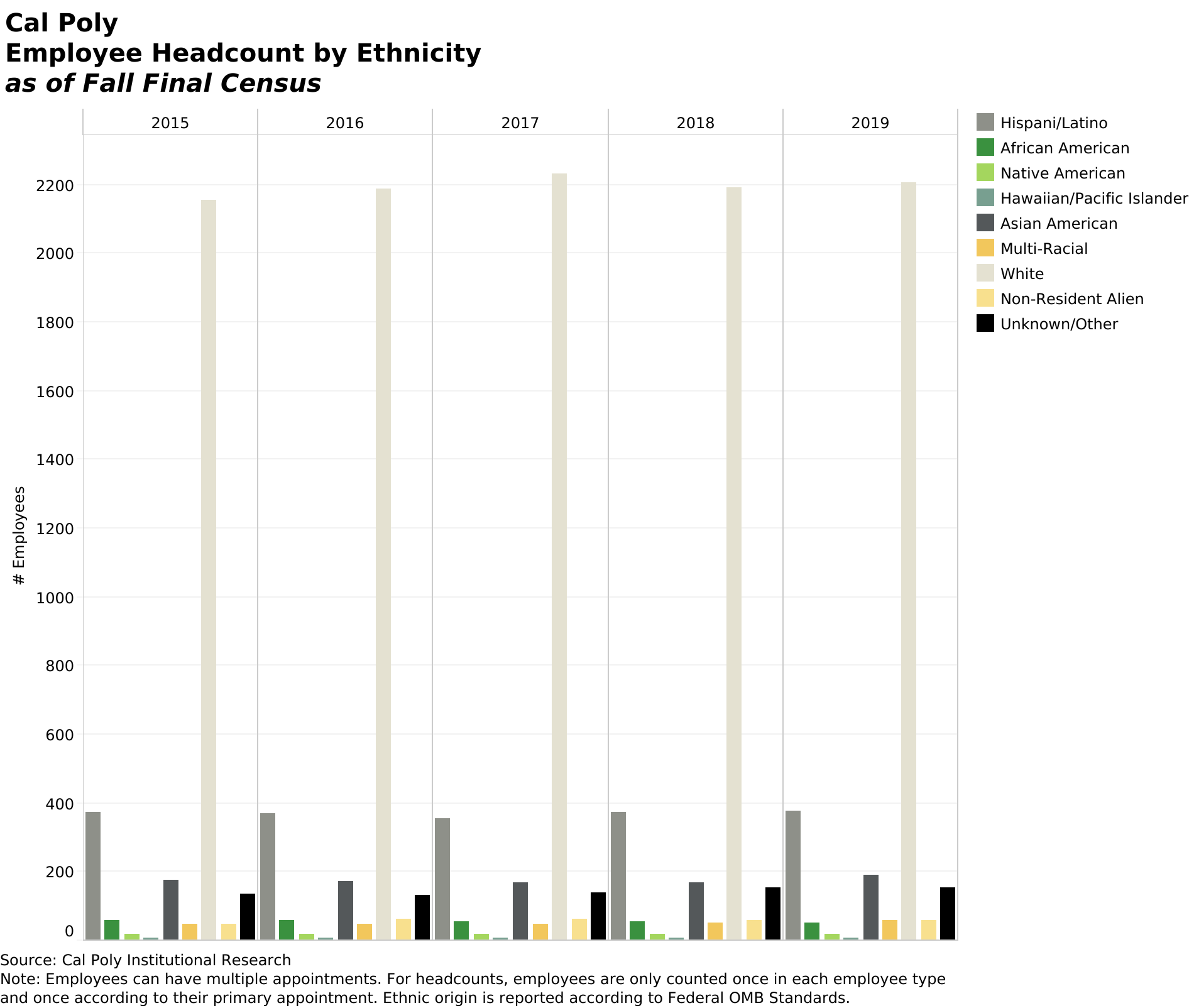
Additionally, examining Cal Poly’s 2021-2021 Retention, Tenure, and Promotion forms on Cal Poly’s Academic Personnel website lists extensive requirements that further highlight the constant need to be validated. At each checkpoint, there needs to be a form of validation whether it is from the dean of the college, peer review committees that consist of faculty, or the students. Even before this process, scholarly publications require a tenure candidate to receive validation from other scholars in within their fields.
After looking through the university archives, Cal Poly does have a few resolutions relating to peer review such as AS-295-88 Resolution to Consolidate Recommendations of Peer Review Committee from 1987 and AS-293-88 Resolution on Initial Appointments of Tenure Track Faculty of 1988, yet in the 120 years Cal Poly has been established, there is little on this subject. When trying to further conduct research on Cal Poly’s tenure and peer review process, there was little documentation on these policies, leaving information unspoken, unwritten, and assumed. Through this lack of documentation and limited information on the peer review process at Cal Poly, the effects of the exclusivity of information can be found in faculty and tenure patterns.
Cal Poly’s faculty makeup historically has been white men. According to a 2010 Sociology Senior Project, “Up until the 1970s not much happened in terms of diversity around the Cal Poly campus and among faculty (Tack 32).” With the lack of documentation in Cal Poly’s peer review policies, the tenure process, and faculty makeup until recent decades, the diversity of Cal Poly’s staff is difficult to see. The senior project further states, “There is limited literature both on the diversity of Cal Poly‟s faculty, and the California State University System,” (Tack 17). Similarly, when attempting to conduct our own research for this project, ten years later, it still remains challenging to find information on faculty diversity and university inclusivity efforts prior to the 1980s.
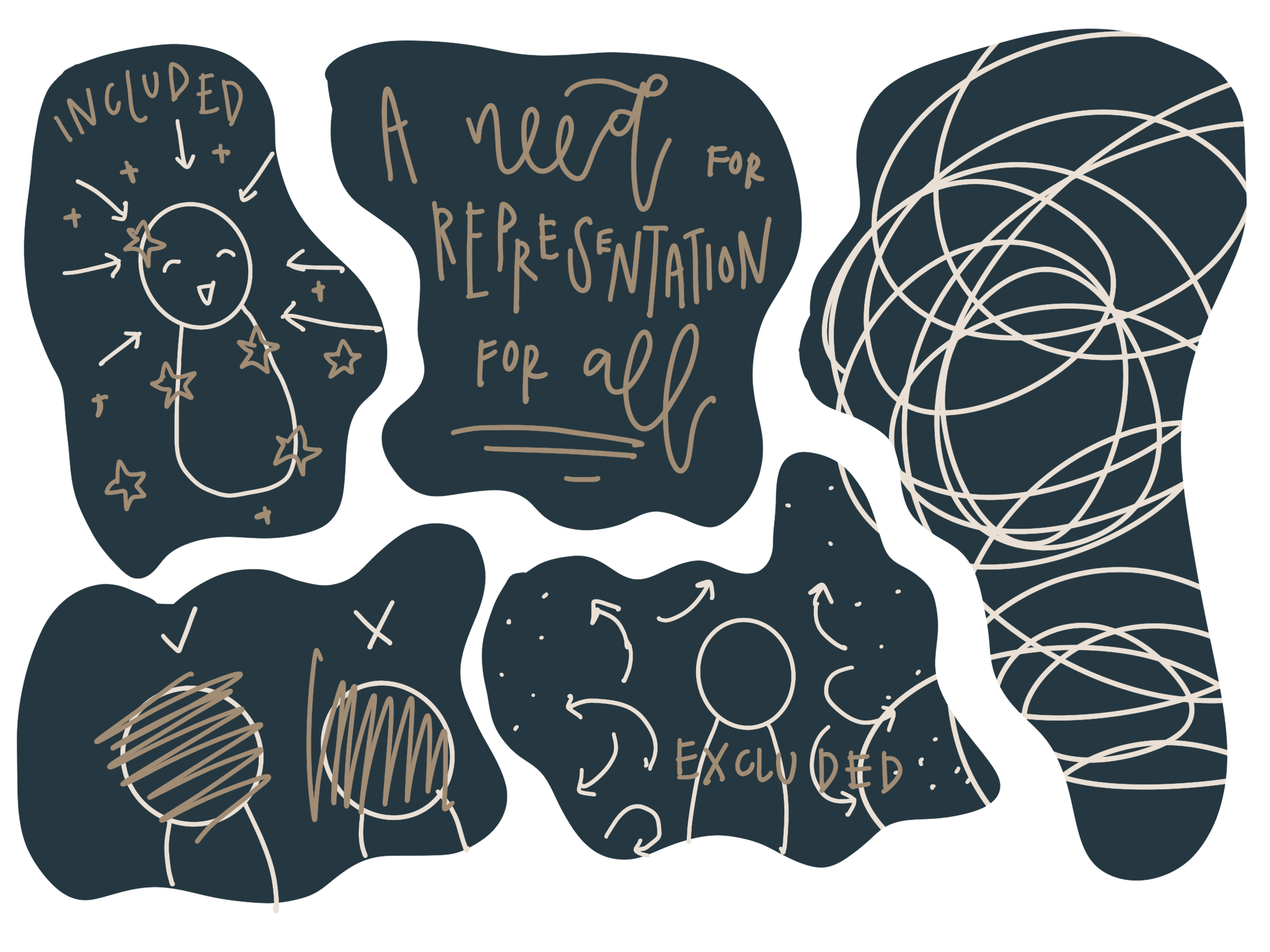
Cal Poly’s 2019 Total Employee Profile was a recent report released that specifies the number of faculty, staff, and management year from the years 2015 to 2019. Furthermore, it breaks down the identities of these faculty members and visually presents them. When looking at the Ethnic Origin Graph, the disproportionate number of white faculty employed, an extreme spike, has remained the same from 2015-2019. Additionally, when looking at the Faculty Headcount and Full-Time Equivalent (FTE) by gender: evidently, more men than women are employed. The faculty makeup on campus shows a great underrepresentation of various identities. The lack of diversity is crucial to change as students want more diversity in faculty. Through more inclusive publication processes and standards, we can help in creating a campus that further harbors diversity, equity, and inclusion.

A research project by Halle Fernandez Gotico, advised by Jaime Ding
Written by Halle Fernandez Gotico
Images Drawn by Halle Fernandez Gotico
This project was presented at the Beacon Sympoisum 2021:
